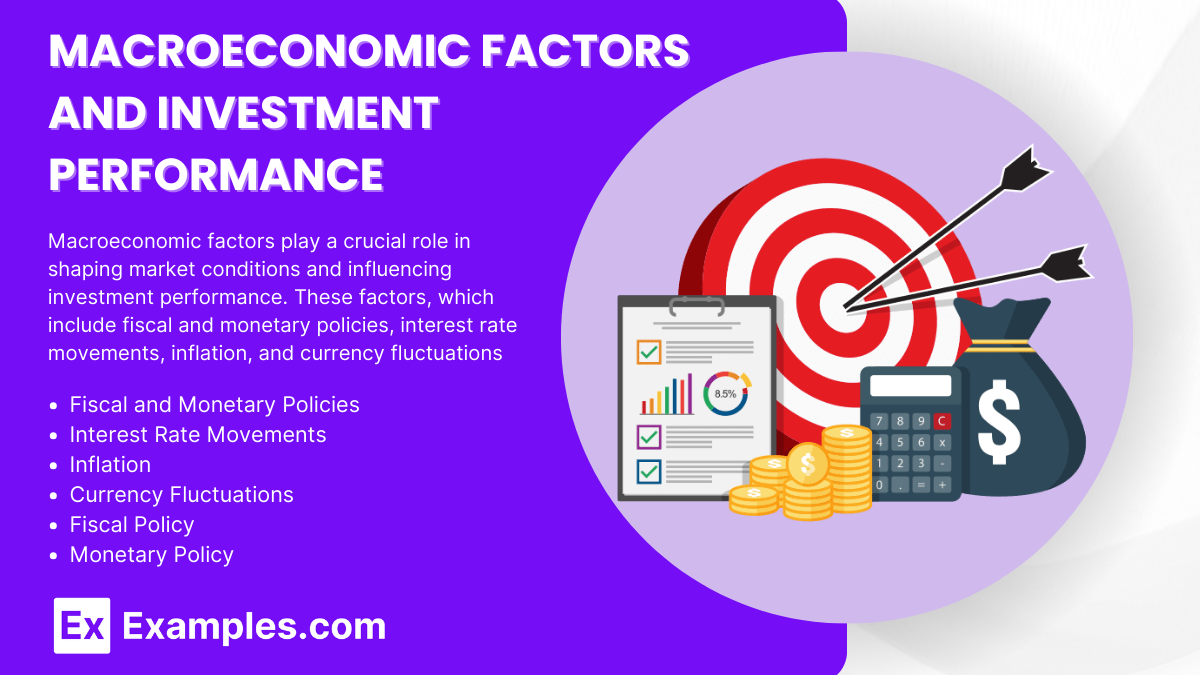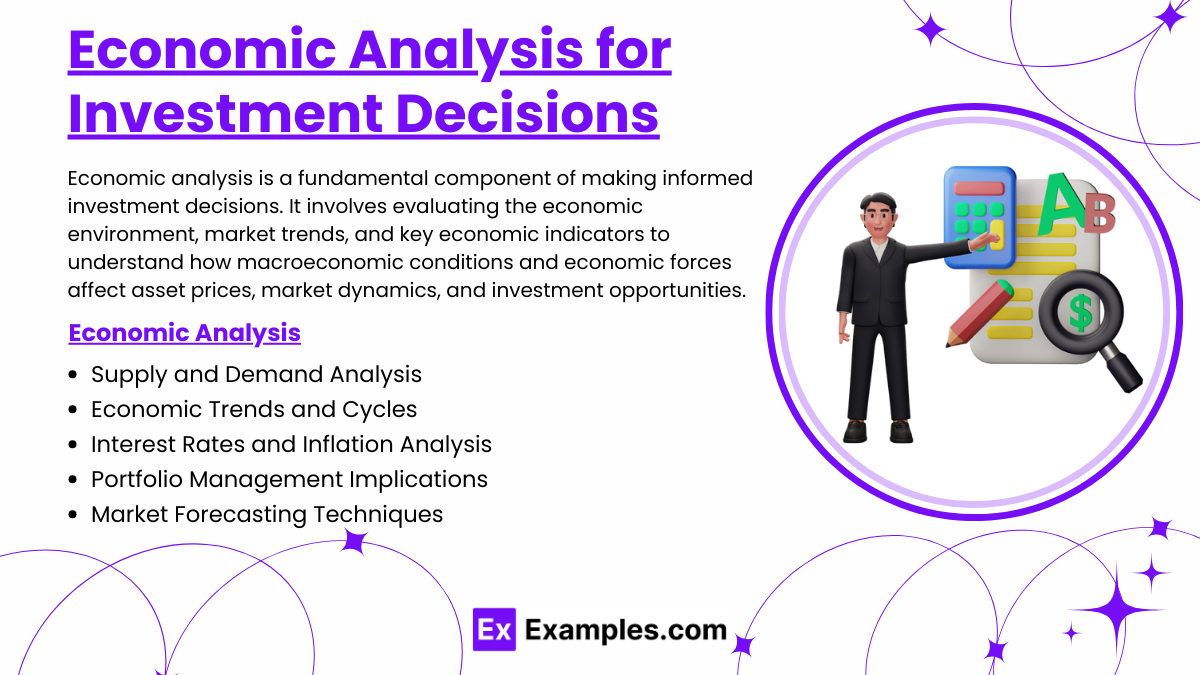Preparing for the CFA Exam requires a deep understanding of Economics and Investment Markets, a critical component of financial analysis. Mastery of economic indicators, market structures, and the interplay between macroeconomic forces and investment performance is essential. This knowledge supports effective asset allocation, market forecasting, and portfolio management, helping achieve CFA success.
Learning Objective
In studying “Economics and Investment Markets” for the CFA Exam, you should understand the key economic indicators, market structures, and how macroeconomic factors influence investment performance. Analyze the relationship between fiscal and monetary policies and market conditions. Evaluate the principles of supply and demand, interest rate movements, and their impact on asset prices and investment returns. Additionally, explore economic cycles, inflation, and currency fluctuations in investment decisions, applying these insights to portfolio management, market forecasting, and investment analysis for CFA exam scenarios. This knowledge strengthens your ability to navigate market complexities effectively.
Economic Indicators and Market Structures

Understanding economic indicators and market structures is fundamental for analyzing economic conditions and making informed investment decisions. Economic indicators provide critical data about the health and performance of an economy, while market structures define the competitive environment in which businesses operate. Together, they offer insights into market dynamics and help investors evaluate the potential impact on asset prices, economic growth, and investment opportunities.
- Key Economic Indicators: Economic indicators are statistics that reflect the current state of the economy. Examples include:
- Gross Domestic Product (GDP): Measures the total value of goods and services produced, indicating economic growth or contraction.
- Inflation Rates: Show changes in the cost of goods and services over time, impacting purchasing power and interest rates.
- Unemployment Levels: Provide insights into labor market health and consumer spending potential.
- Consumer Confidence Indices: Reflect consumer sentiment and spending behavior, which influences economic activity.
- Market Structures: Market structure refers to the organization and characteristics of a market that influence competition and pricing. The main market structures include:
- Perfect Competition: Characterized by many firms offering identical products, leading to efficient pricing and no single firm controlling the market.
- Monopolistic Competition: Many firms offer differentiated products, allowing some control over pricing based on brand and product differences.
- Oligopoly: A few large firms dominate the market, often leading to collaborative pricing or market power.
- Monopoly: A single firm controls the market, resulting in significant pricing power and less competition.
- Business and Economic Cycles: These are recurring phases of economic expansion and contraction that affect asset prices, employment, and economic output. Understanding the stages (expansion, peak, contraction, and trough) is crucial for timing investment decisions, as different phases have varying impacts on market performance.
By analyzing economic indicators and market structures, investors gain insights into market conditions, competitive dynamics, and potential risks or opportunities in the economy. This understanding supports effective portfolio management, risk assessment, and strategic investment decisions.
Macroeconomic Factors and Investment Performance

Macroeconomic factors play a crucial role in shaping market conditions and influencing investment performance. These factors, which include fiscal and monetary policies, interest rate movements, inflation, and currency fluctuations, affect economic growth, consumer behavior, and market dynamics. Understanding their impact is essential for making informed investment decisions and managing portfolio risks.
Fiscal and Monetary Policies:
- Fiscal Policy: Refers to government spending and tax policies designed to influence economic growth. For example, increased government spending can stimulate economic activity, while higher taxes may reduce consumer spending and slow growth.
- Monetary Policy: Central banks, like the Federal Reserve, use tools such as interest rate adjustments and quantitative easing to control money supply, inflation, and economic stability. Lower interest rates encourage borrowing and spending, while higher rates may slow down economic growth and reduce inflation.
Interest Rate Movements:
Changes in interest rates have a significant impact on investment performance. For instance, rising interest rates generally lead to lower bond prices and can reduce the present value of future cash flows, affecting equities and other interest-sensitive assets. The shape of the yield curve (normal, inverted, or flat) also provides insights into market expectations for economic growth and potential recessions.
Inflation:
Inflation measures the rate at which the general level of prices for goods and services rises, eroding purchasing power. Moderate inflation often indicates economic growth, while high inflation can lead to market volatility and reduce the real returns on investments. Inflation-linked securities, like Treasury Inflation-Protected Securities (TIPS), help hedge against this risk.
Currency Fluctuations:
Exchange rate movements impact the value of international investments, affecting import/export prices, profitability, and overall economic competitiveness. A stronger domestic currency can reduce the cost of imports but make exports less competitive, influencing companies with global exposure and cross-border investments.
By analyzing these macroeconomic factors, investors gain a better understanding of market dynamics and potential risks. This knowledge allows for strategic asset allocation, effective risk management, and better prediction of market trends, ultimately enhancing investment performance and portfolio resilience.
Economic Analysis for Investment Decisions

Economic analysis is a fundamental component of making informed investment decisions. It involves evaluating the economic environment, market trends, and key economic indicators to understand how macroeconomic conditions and economic forces affect asset prices, market dynamics, and investment opportunities. By leveraging this analysis, investors can optimize their portfolios, identify risks, and capitalize on growth opportunities.
Supply and Demand Analysis:
- Supply and demand are the foundational forces that drive asset prices in financial markets. Understanding what affects the supply and demand for assets such as stocks, bonds, commodities, or currencies helps investors predict price movements and identify potential entry and exit points.
- Price Elasticity: Analyzing how sensitive the demand for a good or service is to changes in price can indicate potential shifts in consumer behavior, affecting company revenues and asset prices.
Economic Trends and Cycles:
Economic cycles include periods of expansion, peak, contraction, and trough. By analyzing these cycles, investors can make better decisions about asset allocation, choosing to invest more heavily during periods of expansion and adopting more conservative strategies during contractions or recessions.
Interest Rates and Inflation Analysis:
The impact of interest rates and inflation on investments is significant. Rising interest rates can increase the cost of borrowing, reduce consumer spending, and negatively impact equity and bond markets. Inflation can erode purchasing power, affecting consumer demand, pricing, and overall economic health. Economic analysis helps investors anticipate these changes and adjust their strategies accordingly.
Portfolio Management Implications:
Economic analysis informs decisions about asset allocation, diversification, and risk management. Investors may tilt their portfolios based on anticipated economic shifts, such as moving to defensive stocks during recessions or growth stocks during periods of expansion. This enables more resilient and strategically aligned portfolios.
Market Forecasting Techniques:
Predicting future market behavior relies on analyzing economic data, trends, and leading indicators. Techniques like scenario analysis and sensitivity testing allow investors to model how various economic scenarios could affect their portfolios, providing insights for risk mitigation and opportunity identification.
By leveraging economic analysis, investors can make data-driven decisions that align with broader market conditions, enhancing their ability to optimize portfolio returns, mitigate risk, and navigate economic changes effectively. This strategic approach ensures that investment choices are well-informed and resilient in different market environments.
Examples
Example 1: Using GDP Growth to Adjust Portfolio Allocation
An investor monitors GDP growth rates to identify economic expansion or contraction. In a period of strong GDP growth, the investor increases exposure to cyclical stocks such as consumer discretionary and industrials, while reducing holdings in defensive sectors like utilities. This approach capitalizes on economic conditions to optimize portfolio performance.
Example 2: Impact of Inflation on Bond Yields
A portfolio manager analyzes rising inflation and its potential effect on bond yields. Higher inflation expectations often lead to rising interest rates, decreasing bond prices. To mitigate this risk, the manager shifts from long-term bonds to shorter-term bonds and inflation-protected securities, preserving the portfolio’s value.
Example 3: Currency Fluctuations and International Investments
A multinational company analyzes currency exchange rate movements that affect its revenues and costs. By using currency hedging instruments such as forward contracts, the company minimizes the risk of unfavorable currency fluctuations impacting profitability, especially in foreign markets with volatile exchange rates.
Example 4: Central Bank Interest Rate Policy and Equity Markets
An investor evaluates the central bank’s policy on interest rates to assess potential impacts on equity markets. Lowering interest rates can stimulate economic activity and boost stock prices. Conversely, rising rates may slow economic growth and reduce equity market returns, prompting the investor to adjust their asset allocation.
Example 5: Supply and Demand Analysis for Commodities
A commodities trader analyzes supply disruptions and changes in demand for crude oil. For example, geopolitical tensions or production cuts by OPEC can limit supply, driving up prices. By anticipating these market dynamics, the trader positions investments to benefit from price movements, such as going long on oil futures.
Practice Questions
Question 1
Which of the following best describes the impact of rising interest rates on bond prices?
A. Bond prices remain unaffected by interest rates.
B. Bond prices increase as interest rates rise.
C. Bond prices decrease as interest rates rise.
D. Bond prices fluctuate without a predictable pattern.
Answer: C. Bond prices decrease as interest rates rise.
Explanation:
Rising interest rates lead to a decline in bond prices because newly issued bonds offer higher yields, making existing bonds with lower yields less attractive. As a result, their market price falls to align the yield with current rates. This inverse relationship is a fundamental concept in bond pricing and interest rate sensitivity.
Question 2
An investor observes strong GDP growth in a country. Which of the following sectors is most likely to benefit during this phase of the economic cycle?
A. Utilities
B. Consumer Discretionary
C. Healthcare
D. Real Estate
Answer: B. Consumer Discretionary
Explanation:
During periods of strong GDP growth, consumer spending tends to rise, benefiting sectors like consumer discretionary, which includes businesses related to non-essential goods and services (e.g., luxury items, travel). Sectors such as utilities and healthcare are considered defensive and may not experience as significant growth compared to cyclical sectors during economic expansion.
Question 3
Which of the following best explains the effect of a strengthening domestic currency on exports?
A. Exports become more competitive internationally.
B. Exports become more expensive for foreign buyers.
C. Exports have no impact on currency strength.
D. Export prices remain unchanged regardless of currency fluctuations.
Answer: B. Exports become more expensive for foreign buyers.
Explanation:
A strengthening domestic currency makes exports more expensive for foreign buyers because they need to pay more in their own currency to purchase goods priced in the stronger currency. This can reduce demand for exports and negatively impact companies relying heavily on international sales.


